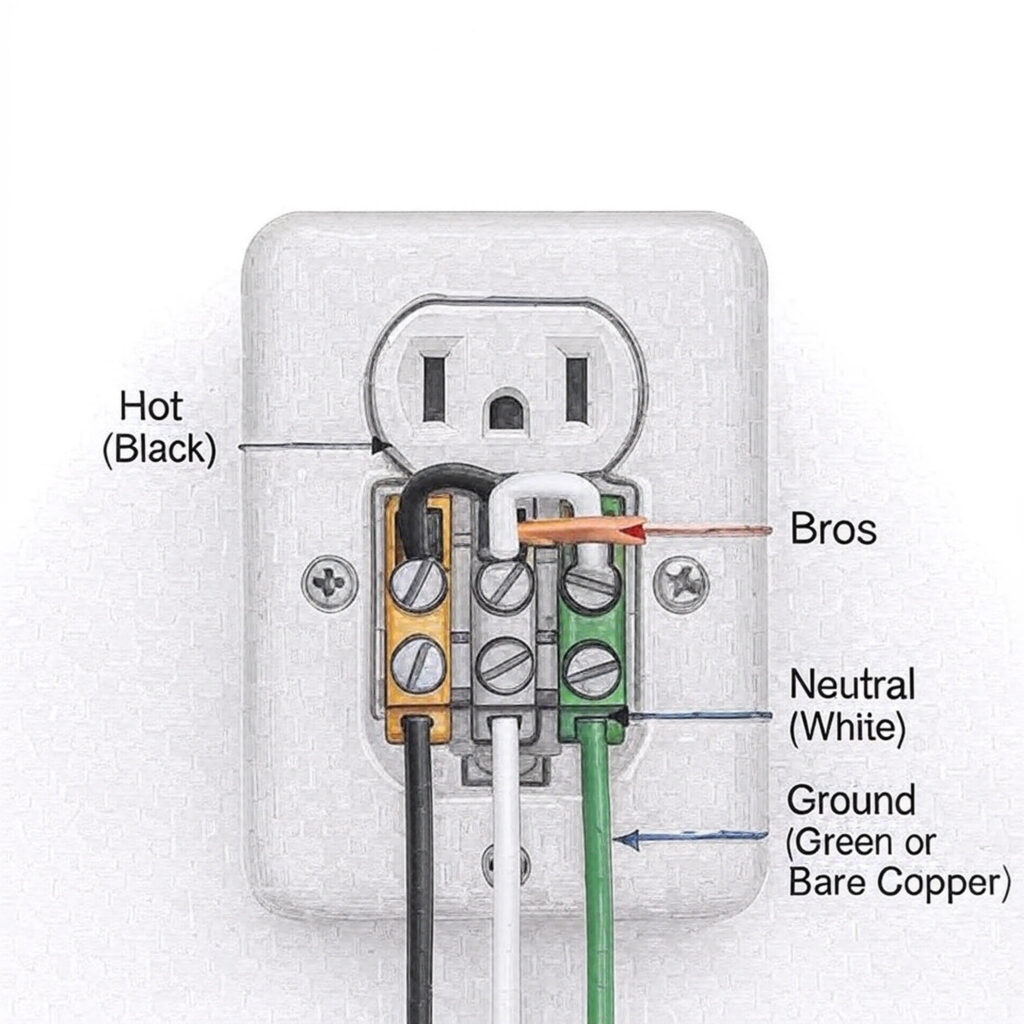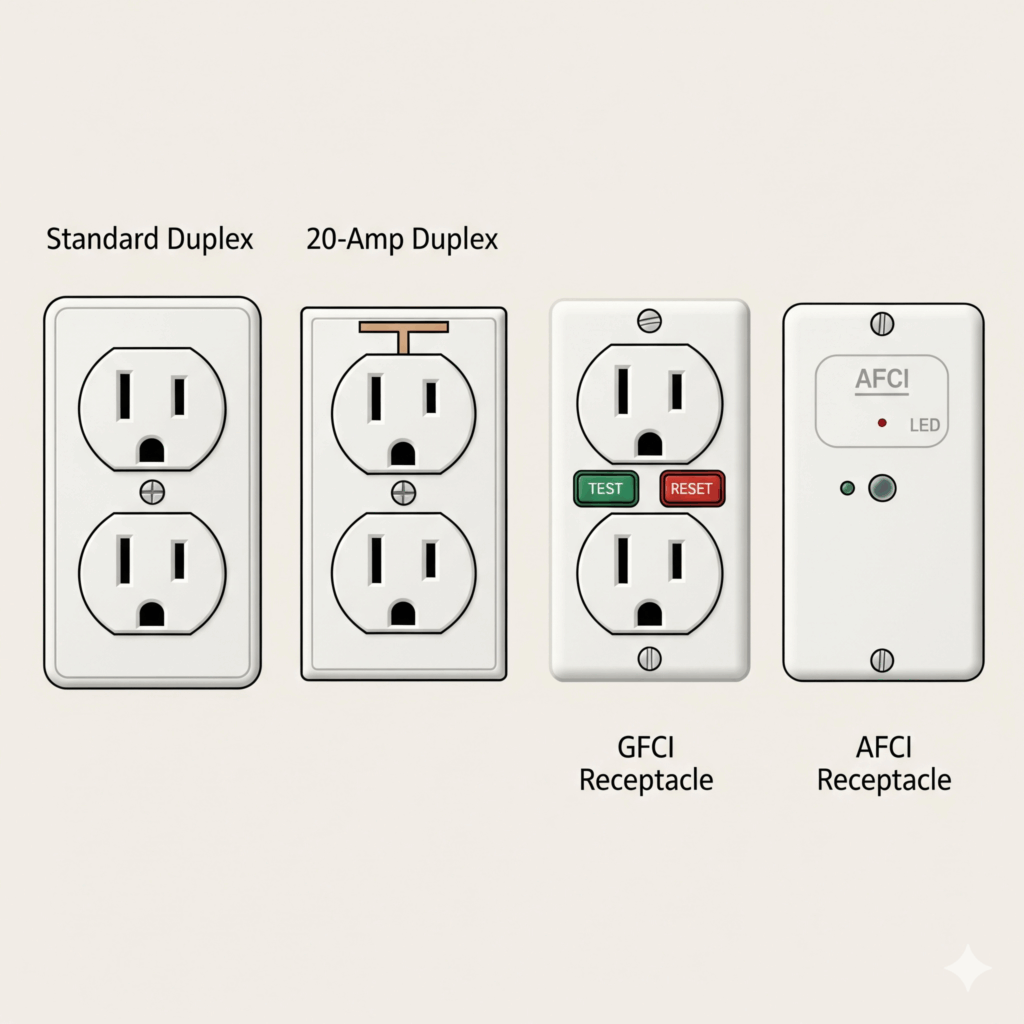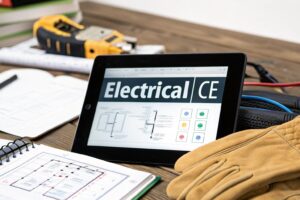What Are Electrical Receptacles?
Introduction
Electrical receptacles are critical for connecting devices to a wiring system, ensuring safe power access. Professional electricians must master receptacle types, functions, and installation to ensure safety and compliance with NFPA 70 (NEC) and NFPA 70E standards. This guide covers these essentials for reliable electrical systems.
What Is a Receptacle and How Does It Work?
An electrical receptacle (outlet) connects devices to a building’s circuit. The NEMA 5-15R, a standard 15-amp, 125-volt grounded outlet, has three slots: neutral (wide), hot (narrow), and ground (U-shaped). When plugged in, prongs contact terminals, completing a circuit for current flow. The ground pin diverts fault currents to trip breakers, preventing shocks (NEC 250.4), while surge protective devices (SPDs, NEC 285) handle voltage surges, working with circuit breakers for safety.

Common Types of Receptacles

Standard Duplex: 15A, common in homes/offices (NEC 210.52).
20-Amp: Identified by a horizontal slot, for high-power appliances (e.g., kitchens; NEC 210.21).
GFCI: Ground Fault Circuit Interrupter; protects against shocks in wet areas (bathrooms, kitchens; NEC 210.8).
AFCI: Arc-Fault Circuit Interrupter; prevents arc-fault fires (bedrooms; NEC 210.12).
Dedicated Purpose: For specific appliances (e.g., ovens), with unique voltage/amperage configurations.
How to Install and Troubleshoot Electrical Receptacles Safely
Mastering electrical receptacle installation and troubleshooting ensures NEC-compliant and safe systems. By following NFPA 70 and NFPA 70E standards, electricians can install outlets correctly and resolve issues like power loss or tripping, ensuring reliability and safety.
Installation & Troubleshooting
Installation: Follow NFPA 70 (NEC) for safe installation:
- De-energize: Turn off circuit at breaker; verify with voltage tester (NFPA 70E 120.5).
- Mount Box: Secure electrical box to stud/wall (NEC 314.17).
- Strip Wires: Strip ½ inch of insulation; form hooks (NEC 110.14).
- Connect Wires: Neutral (white) to silver, hot (black/red) to brass, ground (green/bare) to green screw; follow GFCI instructions.
- Secure: Fold wires, secure receptacle, install faceplate.
- Test: Re-energize; use receptacle tester to confirm wiring.
Troubleshooting: De-energize before inspecting (NFPA 70E):
- No Power: Check breaker (NEC 240); test voltage; tighten loose connections.
- GFCI Tripping: Indicates ground fault; test appliances or wiring (NEC 210.8).
- AFCI Tripping: Suggests arc fault; inspect for damaged insulation (NEC 210.12).
- Scorched/Melted: Overheating; replace receptacle, verify wire size with ampacity chart (NEC 310.15).
- Loose Plugs: Replace worn receptacle.
- Humming/Buzzing: Tighten loose wires or replace receptacle.
Safety Protocols
- De-energize: Verify with non-contact/contact voltage testers (NFPA 70E 120.5).
- PPE: Wear insulated gloves, safety glasses (NFPA 70E 130.7).
- LOTO: Use lockout/tagout for all energized work (NFPA 70E 120.5).
- Wire Sizing: Use ampacity chart for load (NEC 310.15).
- Code Compliance: Follow NEC and local codes.
Conclusion
Mastering receptacles requires deep knowledge of types, installation, troubleshooting, and safety per NFPA 70/70E. By using tools like ampacity charts and prioritizing safety, electricians ensure safe, reliable systems that meet code and protect users.

